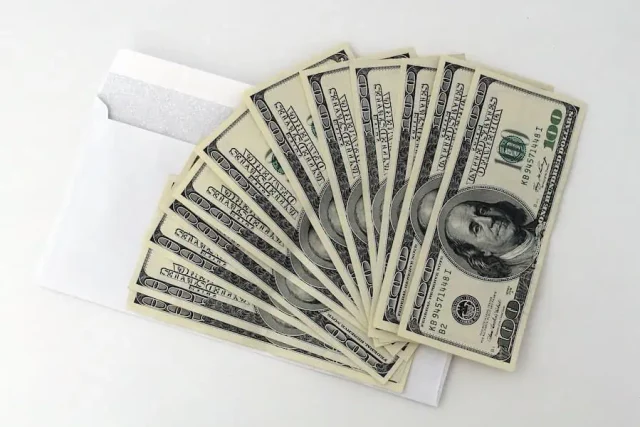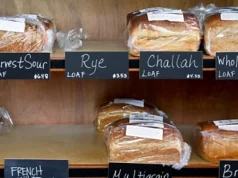So, are $2 bills worth anything other than their face value? The answer to this question might surprise you.
It is common practice that rare items have more value, especially when demand increases. The $2 bill is no different. According to business insider, they represent 0.001% of all currencies in circulation.
The $2 bill is the rarest current ever produced in the history of the United States of America, as only 1.2 billion dollars were made.
1.2 billion dollars sounds like a lot of $2 bills in circulation. But in reality, it’s not. Compared to the 11.7 billion dollars of the 1-dollars denomination produced, the amount of 2-dollar bills printed was small.
Now, does being rare make the $2 bill’s value increase? Keep reading to know more.
Are $2 Bills Worth Anything Other Than Mere Speculations?
Your $2 bill could be worth something, depending on several factors. These include the demand, rarity, and condition of the currency.
For instance, $2 bills produced between 1976 and 2013 are worth $2. Even the uncirculated $2 bills produced between 1976 and 2013 are worth their face value, $2. But note that $2 bills produced earlier are worth a bit more.
We’re talking about $2 bills made around 1862 and 1918. These are rare and regarded as highly collectibles. You could earn around $50 for each $2 bill in well-circulated condition.
Furthermore, if you have $2 bills in mint condition printed around this period, you can get around $500 or more for each. The uncirculated varieties even have a higher value. You can get $1000 or more for them.
A Handy Tip: You can check the U.S. Currency auction list to see the value of your $2 bill. Look for the seal color, serial number, or other special printings.
Note that earlier prints boast red and brown seals, while recent ones have green seals.
Why Do Collectors Pay Attention To The $2 Bills?
The rarity of the $2 bill is the reason collectors pay much attention to it. Business Insider report indicates that the $2 bill represents 0.001 percent of all currencies in circulation.
So, only a handful of these bills are in circulation. But then, rarity doesn’t always translate to higher value. Several factors determine a $2 bill’s value. Check them out below.
1: Currency’s age – If you have older $2 bills, count yourself lucky. The older ones have a higher value than the new ones.
2: Currency’s condition – A $2 bill’s condition significantly affects its value. One in an uncirculated condition has a higher value than one torn substantially, regardless of whether both were produced in the same year.
3: Currency’s serial number – The $2 bills boast serial numbers, but note that some bills have more value courtesy of their serial number.
4: Currency misprints – Did you know $2 bills with misprints, especially the ones produced in the 80s have far more value? Yes, they do. The misprints may include the seal being inappropriately placed or doubled. Such types of $2 bills are worth something.
Rare $2 Bills That Are Worth Something
If you have a two-dollar bill, check the value. The ones produced in the 80s have some value. And as we said earlier, the demand and rarity affect the currency’s value.
2-dollar bills aren’t rare these days. You’ll find some among your change or just sitting around. However, there are some valuable and massively rare ones out there.
If you have any of the 2-dollar bills below, don’t spend them. Look up their value from this table and demand you get the equivalent or higher.
| $2 (Year of production) | How to identify them | Possible Value | |
| 1. | 1928B $2 Red Seal Star Notes | Pay attention to the currency’s serial number. If it begins with a star and ends with a B, then that 2-dollar bill is rare and valuable. | $70 – $1000+ |
| 2. | 1890 Treasury Note $2 Bills (Brown Seal) | Focus on the portrait on this $2 bill. Is the person in the portrait General James McPherson? If yes, then it’s a valuable $2 bill. | $550 – $4500+ |
| 3. | 1890 Treasury Note $2 Bills (Red Seal) | If the portrait has General James McPherson, then it’s a valuable $2 bill. | $550 – $4500+ |
| 4. | 1862 $2 Bill “Legal Tender Note.” (Red Seal) | If the $2 bill boasts the portrait of Alexander Hamilton, then it’s super rare. | $500 – $2800 |
| 5. | 1976 Bureau of Engraving & Printing Doubled Serial Number $2 Bills. | Look at the serial number. Is it printed over itself or doubled? If yes, then it’s super rare and valuable. | $400 – $900+ |
| 6. | 1869 $2 Bill Legal Tender Note (red seal). | Pay attention to the portrait’s location. You’ll find an oval containing a picture of Thomas Jefferson. If yes, then you have a super rare and valuable 2-dollar bill. | $500 – $3800 |
So these are rare 2-dollar bills. And consequently, they’re worth more than their face value.
If you have any of these currencies, look up their value in the U.S. Currency auction list. There, you’ll find the currency’s actual value and make maximum profit when you sell to collectors.
Are $2 Bills With Serial Numbers Worth Anything?
Some 2-dollar bills have serial numbers. But the question is, do these currencies have any value? Do the serial numbers place any value on these rare $2 bills?
Some 2-dollar bills with serial numbers are higher than their face value. Use the details below to check if your $2 bill is worth anything.
- Star – Check your $2 bill’s serial number carefully. Can you spot a star at the beginning and a B at the end? If yes, then you have a super rare two-dollar bill. The fact that it’s a rare currency makes it more unique and valuable than its face value.
- Palindromes – Another name for this is radar notes. You’ll notice that the serial numbers are the same, regardless of the angle you’re looking at it from.
- Repeated – Is your $2 bills’ serial numbers repeated? If yes, then you have rare and super valuable two-dollar bills.
The History of The $2 Bill
2-dollar bills have been in circulation since as far back as 1862. The Department of Treasury has released six types of 2-dollar bills since that period.
Receiving a 2-dollar bill was considered a jinx back then. In short, gambling establishments such as racetracks and casinos were against paying out the currency.
Later on, the opposing view people had toward the currency subsided. Factories were now paying their workers with $2 bills.
Americans were not fans of the $2 bills. So, it was one of the most unpopular currencies ever printed. Most people believed the currency brought bad luck and refused to accept or use it.
So, the $2 bills were scarce back in the day. One of the reasons for this scarcity was the rejection, while another was inflation.
Banks restricted the $2 bills issued in the 1860s because of fear of inflation. They believed the widespread use of the currency could cause inflation.
The $2 bill’s fortune shifted when the United States of America began World War II. The U.S. Treasury was heavily against moving the dollar across the US-Mexican border in early 1942.
The reason for this decision was simple. The treasury didn’t want Mexico to serve as the country where Axis agents were disposing of the U.S. dollars.
So, how did this decision favor the $2 bills? Not only the 2-dollar bills. The silver dollars were also positively impacted. The demand for both currencies skyrocketed, as the treasure’s 1942 decision did not affect them.
In other words, the $2 bill and silver dollars were not blocked from crossing the US-Mexican border. This made the demand and value of both currencies skyrocket along the border.
A Handy Tip: The 2-dollar bills vary in size. You’ll discover that the ones made before 1928 are pretty large. But those made after 1928 are smaller and feature Thomas Jefferson’s face.
Again, the ones produced between 1928 and 1976 have some notable differences. In addition to Thomas Jefferson’s face, they include the former U.S. President’s home.
But in the notes made after 1976, the image of Thomas Jefferson’s home was replaced with a portrait of the Declaration of Independence.
Conclusion
Are $2 bills worth anything? Your 2-dollar bills can be worth something, depending on several factors. These include demand, rarity, and year of release.
2-dollar bills produced between 1862 and 1918 have great value. Collectors could pay you around $500+ for each note.
Two dollar bills released around 1976 and 2013 are worth their face value. So, it’s a waste of them trying to hoard these.














